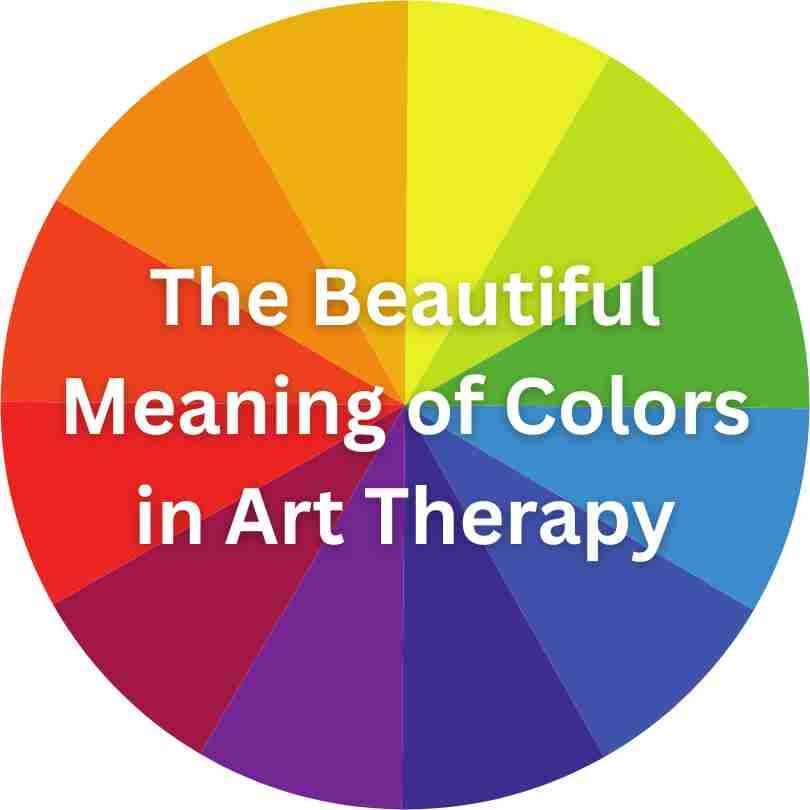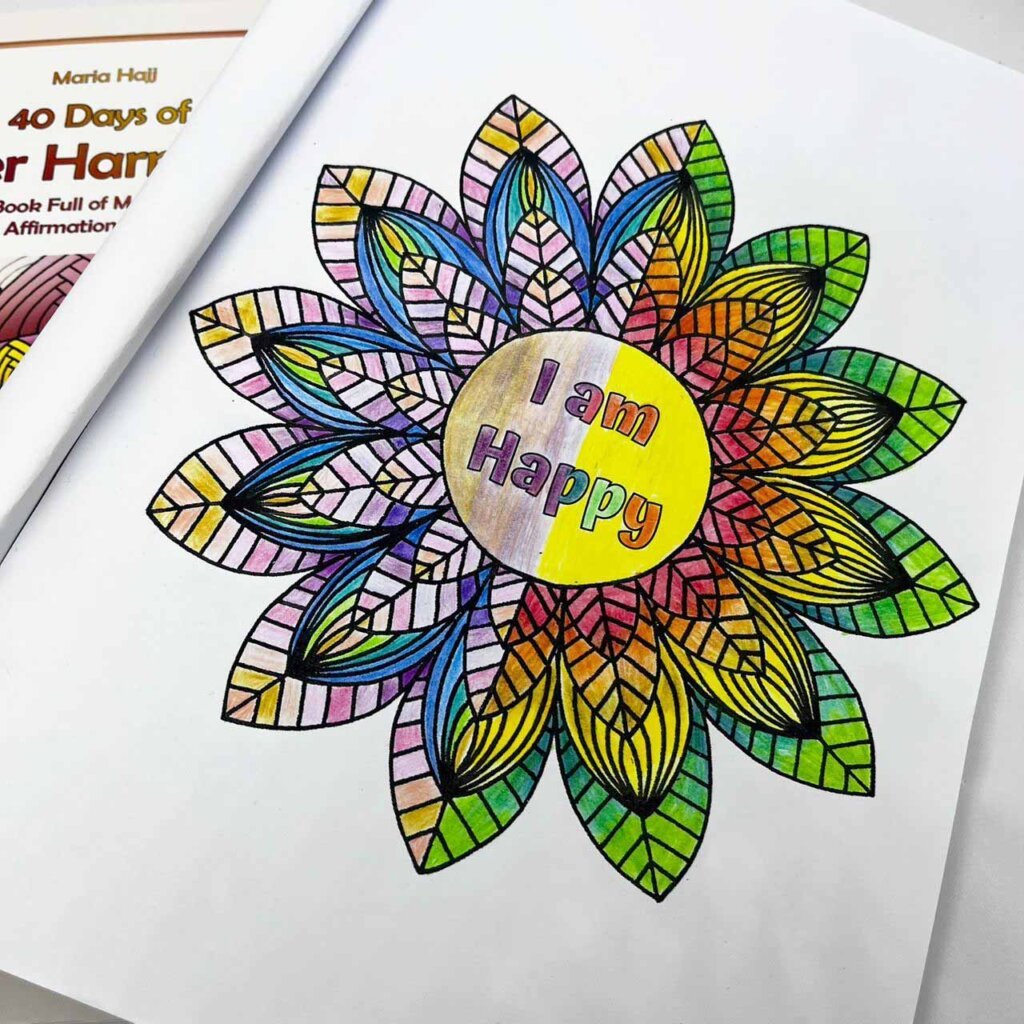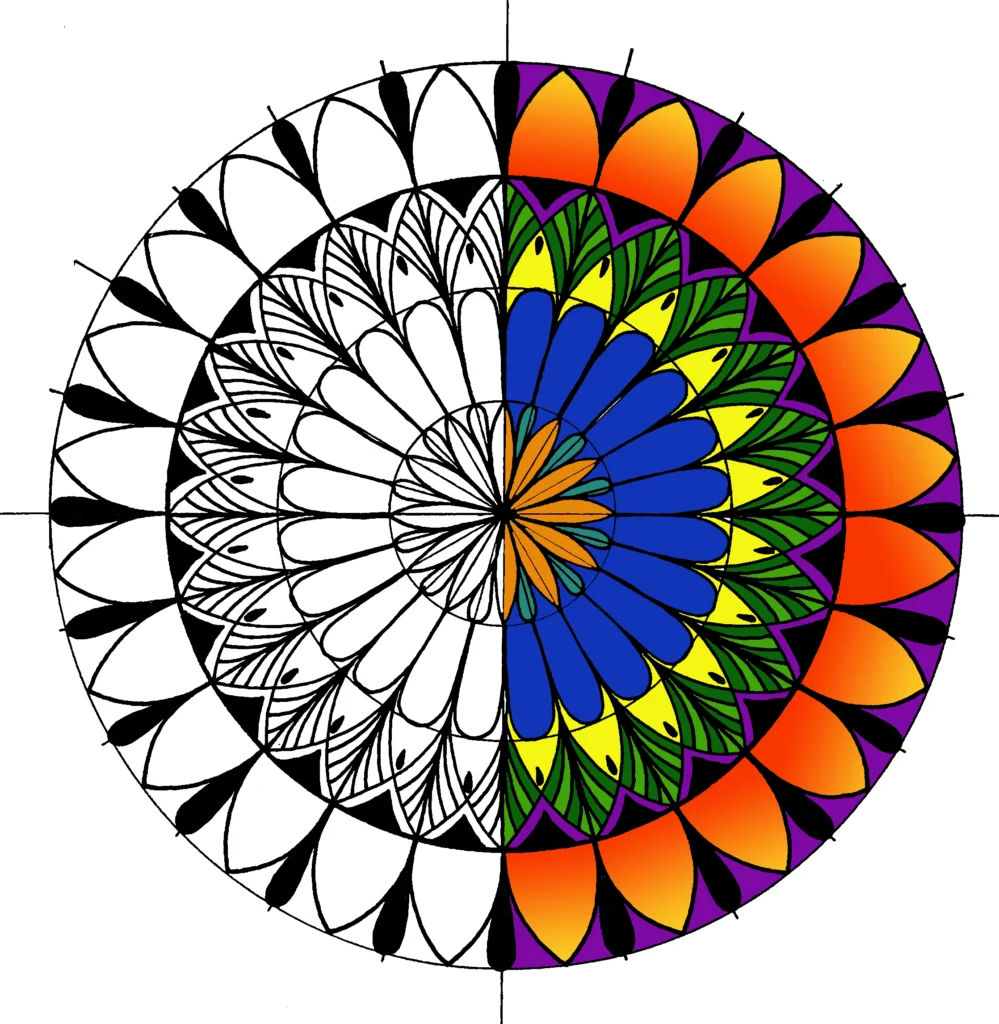
How to Understand Yourself Through the Colors You Choose in Mandala Coloring
The meaning of colors goes far beyond what we see with our eyes—it touches what we feel in our hearts. Every shade we’re drawn to holds a story, a memory, or an emotion. That’s why, in art therapy, color becomes a gentle language through which our inner world speaks. Whether it’s the calm of blue, the warmth of orange, or the intensity of red, the colors we choose are never random. They’re often mirrors reflecting our current emotional state—even if we don’t consciously realize it.
Coloring isn’t just a fun activity—it’s also a way to listen to your emotions. In fact, it gives your mind the space to express what words sometimes can’t. In the quiet act of choosing colors and filling in shapes, you give form to feelings, thoughts, and needs that may be hidden beneath the surface. This is especially true when coloring mandalas. Their repetitive, symmetrical design naturally invites stillness, which helps you turn inward and access your intuition.
So, while you may believe you’re simply decorating a drawing, you’re actually having a meaningful, silent conversation with your inner self. Through every color you select, you’re gently revealing what you’re feeling, healing, or searching for. In that moment, coloring becomes more than creativity—it becomes self-discovery.
Why Does the Meaning of Colors Matter in Art Therapy?

Colors are connected to emotions. In fact, color is often used in therapy because it can express what words cannot. For example, when someone feels anxious or overwhelmed, they may reach for calming colors like blue or green without even realizing it.
Moreover, mandalas are very special in this process because their circular, balanced structure helps bring peace to the mind. As you color a mandala, your brain begins to relax, and you start choosing colors more naturally and instinctively. This is why mandala coloring is often used as a gentle and healing art therapy tool.
What Does Each Color Say About You?

Although meanings can vary from person to person, some color associations are very common in art therapy. Here are a few examples:
- Red – This color shows energy, passion, and sometimes anger. Choosing red might mean you need to express strong feelings or take action.
- Blue – A peaceful and calming color. It often reflects a desire for quiet, rest, or emotional healing.
- Yellow – Bright and cheerful, yellow shows joy, confidence, or creativity. You may choose it when you feel hopeful or want to lift your mood.
- Green – Green is about balance, growth, and connection to nature. It may appear when you need healing or feel grounded.
- Purple – This is the color of intuition, dreams, and inner wisdom. It often shows up when you’re searching for deeper meaning.
- Orange – A fun and social color. Orange reflects joy, excitement, or the need to connect with others.
- Black or Gray – These colors can show mystery, protection, or emotional tiredness. They may appear when you’re going through a quiet or reflective time.
- White – White is calm and clean. It often appears when you want a fresh start or feel peaceful.
How to Understand Your Color Choices
While coloring, you probably don’t stop to think about why you’re picking a certain color. And that’s okay! In fact, your choices are more honest when you don’t overthink. But afterward, it’s helpful to reflect. Here are some simple ways to explore the meaning behind your colors:
- Notice Repetition
Do you use the same color often? That might show a strong emotion or an area in your life needing attention. - Check Your Mood Before and After
Ask yourself how you felt before you started coloring. Did certain colors make you feel better or worse? - Write About It
After you finish coloring a mandala, take a moment to write down a few thoughts. What emotions came up? Did any memories surface? - Be Honest with Yourself
There are no wrong colors. Every shade you choose says something valuable about how you’re feeling.
Using Mandala Coloring and The Meaning of Colors as a Self-Discovery Tool
Coloring mandalas can become a powerful and peaceful daily habit. Not only does it help reduce stress, but it also helps you understand your emotional patterns over time. For instance, you may notice that during busy, stressful weeks you choose darker tones. On calm days, you might reach for soft pastels or bright colors.
As time goes by, your mandalas become like a personal emotional diary. They reflect your growth, your struggles, and your healing. The best part is—you don’t need to be an artist or therapist to benefit from this practice. All you need is a coloring book and a few colors.
Final Thoughts
In the end, coloring a mandala isn’t just about creating something pretty. It’s about expressing what’s inside you, even when you’re not fully aware of it. The colors you choose tell your story. So next time you pick up your colored pencils, pay attention to what your heart is trying to say.
Let each color guide you. Let each mandala become a step closer to knowing yourself better.
Tip: You can even keep a small notebook where you write your color choices and feelings. Over time, you’ll start to see patterns—and that’s where real self-understanding begins